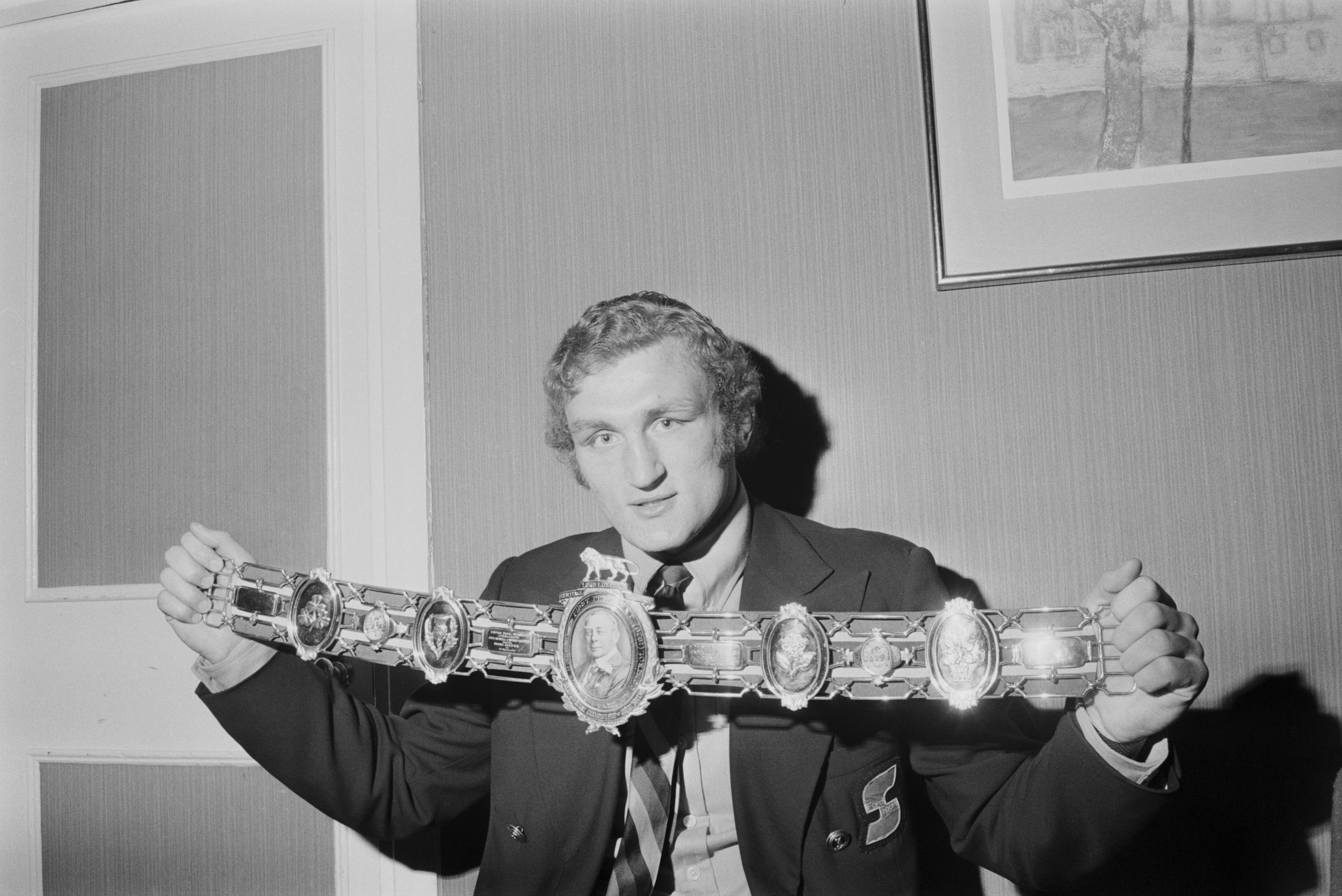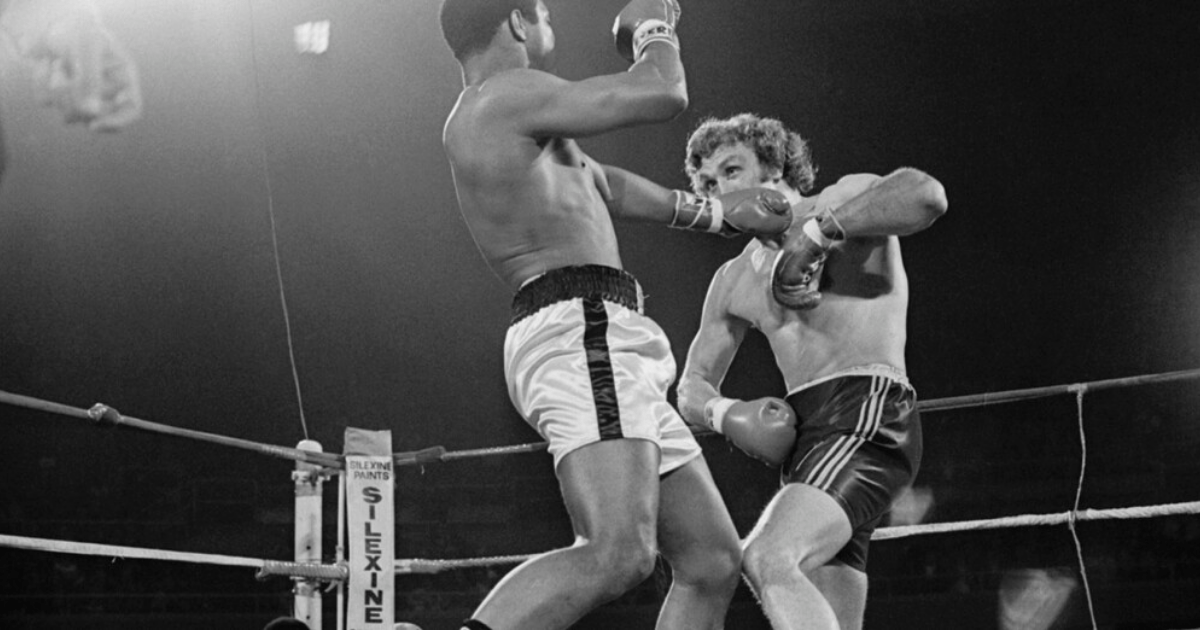JOE BUGNER will be completely unaware that Tuesday will be the 50th anniversary of his first fight with Muhammad Ali, at the Las Vegas Convention Center.
A few days ago I tried calling Bugner in Australia, where he’s lived for 36 years, to reminisce with him about that 12-round non-title clash that grabbed the attention of the nation.
Joe Bugner up against Muhammad Ali in Las Vegas in 1973
Bugner fought Ali for the world title in Kuala Lumpur two years later but lost
Though I haven’t spoken to him for some time I was surprised to discover his telephone had been disconnected.
Looking forward to my usual banter with him, I was horrified and saddened when I contacted his eldest son Joe Jr, 53, and learned why – his father is living in a Brisbane care home suffering from severe dementia.
Joe Jr said: “I’m afraid there’s no point in giving you Dad’s mobile number because I’m afraid he remembers nothing about his boxing career.
“I found it heart-breaking when I visited him just before Christmas because he didn’t seem to know who I was.
“Physically he’s in great shape and looks years younger than his age. He will be 73 next month yet believes he’s only 38.
“He happens to be in his own little world. While we were chatting he told me his wife Marlene was out shopping and would be back soon – Marlene passed away more than a year ago.”
Hungarian-born Bugner dominated British boxing in the 70s like Frank Bruno and Lennox Lewis did in the 80s and 90s.
At 6ft 4in with blond curly hair, he looked like a modern day Adonis. He was twice British heavyweight champion and three times European champ and was much better than he was given credit for.
Unfortunately he was never that popular with the fans, who never forgave the 21-year-old for getting a highly controversial points decision over national treasure Henry Cooper – which I thought was justified – that ended his career.
But his greatest achievements were twice going the distance with Ali and once with Joe Frazier – not many of our heavyweights would have been good enough to have done that.
And I have no doubt that if he had been fighting outside the Ali era – the Golden Age of heavyweights – he would have won one of the world championship belts given his speed, stamina and exceptional defensive skills.
But when he did fight Ali for the title in in Kuala Lumpur he hardly covered himself in glory. It was in the open air and though it started at 9.30 in the morning it was extremely hot and humid.
Bugner didn’t try to win and was simply hell-bent on surviving the 15 rounds. In my SunSport report I scathingly called him a “Harmless Hercules.” I must say he accepted that he deserved the criticism and he never let it affect our friendship.
After chasing Joe for 45 minutes Ali was confined to bed suffering from heat exhaustion while we watched Joe swimming in his hotel pool sipping champagne after every lap.
Disgusted with him, promoter Mickey Duff said “I suppose Joe at the end of the day, money is the name of the game.”
Bugner replied “Yes – and being able to count it.”
The boxing community will be as upset as I was to learn of Joe’s memory loss.
But Joe Jr added “Please let everyone know Dad isn’t unhappy. He is in luxury accommodation and the staff at the home are taking excellent care of him.

Bugner poses with the Lonsdale Belt after beating Henry Cooper
“I thought of bringing him back to England but his carers advised against it – they said he is used to a certain routine and it wouldn’t be fair to uproot him at this stage of his life.”
I always felt Bugner, despite his many successes was never really in love with boxing – which makes his record of 83 fights, 69 wins with 43 knockouts – even more remarkable.
Frequently Asked Questions
How long do boxers train a day?
Boxing trainers usually work out at least 4 hours a day. They learn new moves and practice their punches. Boxers spar 10 times per week.
What is Boxing?
Boxing is a sport that involves two people who try to knock each other out by hitting them in the head and face. The goal of boxing, is to strike your opponent as hard as you can without causing injury. To achieve this, both boxers should be able to throw punches with high velocity. They should also have excellent hand-eye coordination.
What are the advantages of learning to box
The following are reasons why you should learn how to box.
- It builds confidence. Learning to box will give you the courage to face bullies or other people who might try to bully you.
- It improves your health. Boxing can help build muscle mass. Muscle mass is what makes you stronger.
- It helps you to learn self-defense skills. When you learn how to fight, you learn how to protect yourself.
- It builds mental toughness. Mental toughness is important when you’re facing challenges.
- You feel accomplished. Once you’ve mastered a certain technique, you’ll feel like a real boxer.
- It’s fun! Nothing is more fun than being punched in a stomach.
- It’s cheap. All you need to do is get a pair or boxing gloves.
- It doesn’t take up much space
Statistics
- You want to be running at roughly 75-80% of your top speed..5 mile slow, easy recovery jog at the end.[6]X Research source 2Mix in long runs, shadow boxing, and short sprints on non-interval days. (wikihow.com)
- It is just like normal sparring with a partner, but you want to throw punches at 75% of your normal speed. (wikihow.com)
External Links
amazon.com
- Amazon.com – Ringside Diablo Wrestling Boxing shoes : Clothing Shoes & Jewelry
- Amazon.com – Sanabul Boxing Wraps Elastic 180in Red — Sports & Outdoors
boxandflow.com
How To
These are the basic skills of boxing
How to box effectively
Boxing has become a very popular sport. It involves two people who attempt to knock each other out of their heads. The rules of boxing vary from country to country. There are three main types of boxing: Amateur boxing, Professional boxing, and Olympic boxing.
Amateur boxing is often practiced at school, college, or university. This type includes sparring sessions using padded gloves, but without protection. Amateur boxing competitions typically last for three rounds, each lasting five minutes. There are many styles of amateur boxing such as Kickboxing or Muay Thai, Taekwondo and Karate, Judo and Wrestling, among others.
Professional boxing is usually practiced in gyms, clubs or stadiums. They are protected by protective equipment like a mouthpiece, nose protector, shinguards, elbow pads and knee pads, waist belt, and groin protection. Professional boxing competitions include six rounds of four minutes each. There are several different styles of professional boxing including Boxing, MMA (Mixed Martial Arts), Kickboxing, Muay Thai, Taekwondo and others.
Olympic boxing takes place at the Olympics. Boxers wear special protective gear, which must conform to international standards. Each round lasts three minutes and is made up of eight rounds. Olympic boxing is limited to two styles: Light Flyweight and Heavyweight.
Boxing is based on the following skills:
- Techniques for punching
- Techniques for protecting yourself
- Footwork
- Stance
- Move your body
- Defense
- Combination
- Rotation
- Spare parts
Punching Techniques
There are seven types. Each punch is different. Some punches are more powerful than others. A strong uppercut for example requires a lot of force. On the other hand, a straight punch requires less power but it is faster than other punches.
There are also many combinations. These are combinations made up of several punches that can be used together to achieve one goal. A combination may contain several parts. An example of this is a left hook, followed by a right crossing. This will damage the opponent’s jaw.
Guard Techniques
To defend himself from being attacked, a boxer uses his entire body. He does this by using his legs, arms, elbows, hands, knees and feet.
Legs
To defend against kicks, a boxer should use his legs. If he gets kicked, he raises one leg and turns away from his attacker. To avoid being kicked in the side, he bends down if the attacker attacks from the front. But if the attack comes in the back, he will stand straight and block the kick using his foot.
Elbows
Elbow strikes are very effective because they inflict much pain. An elbow strike can be delivered directly or indirectly. Directly, you strike your opponent with your forearm. Indirectly, you hit him with another portion of your arm.
Hands
Boxers use their arms to stop incoming blows. To do so, they raise their fists above their head and move them towards the direction of the attack. Then, they touch the attacker’s hand.
Knees
When receiving a blow to the stomach, abdomen or chest, a boxer should bend his knees to absorb the impact. A lot of boxers use knee strikes to defend themselves.
Feet
Boxers should respond to being attacked by their opponent by standing back and delivering counter-attacks. He can then gain distance from his opponent. A boxer must also maintain his balance when responding to an opponent’s counter-attack.
Stances
Boxing effectively requires a boxer to have a good stance. The way he defends him will be dictated by his stance. It dictates how he places his body and faces his opponent. There are many positions that boxers can adopt. Here are some of the more popular ones:
- Low stance
- High stance
- Southpaw stance
- Western stance
Moving your body
A boxer must be able to move around his opponent in order to win a fight. This requires changing your position, speed, and rhythm.
Rotation
When a boxer throws a punch, he rotates in order to increase the reach of his arm. You can rotate at different speeds depending upon the punch.
Combinations
The effectiveness of a combination depends on the timing of each individual punch. A combination that works well starts with strong punches and ends with weak ones is a winning combination.
Spares
Sparring is a form of boxing that aims to improve your skills. Sparring is a training session that helps a boxer train his mind and body. In conclusion, the purpose of sparring is to learn how to fight and not get hurt.
You need to have patience and dedication in order to learn how boxing works. To be a better boxer you need to train hard.

